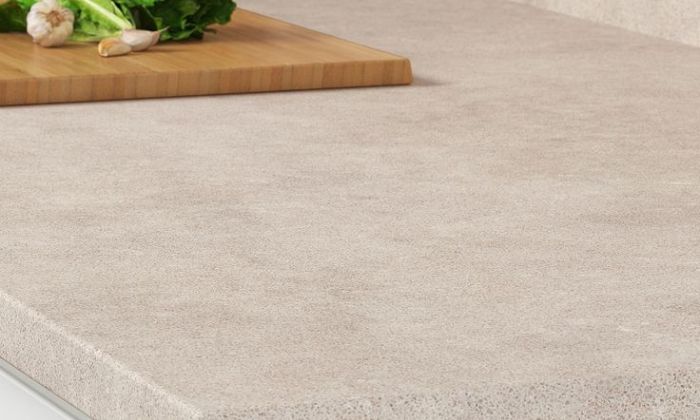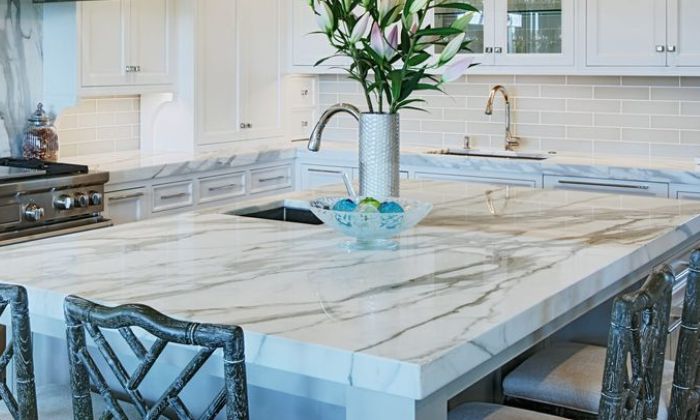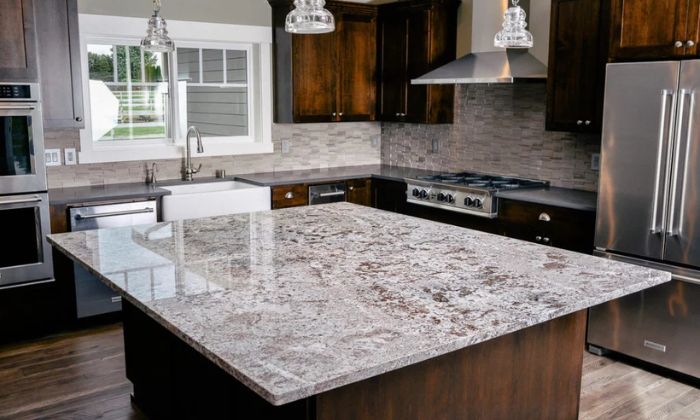How to Clean Terrazzo Floors | Tips for a Sparkling Shine
How to Clean Terrazzo Floors: Terrazzo floors are a timeless and elegant choice for many homes and commercial spaces. Known for their distinctive combination of marble, granite, and other aggregates set in a cement or epoxy base, terrazzo offers a unique look that is both durable and aesthetically pleasing. The polished finish and versatility of terrazzo make it a popular flooring option that can last for decades if cared for properly. Proper cleaning and maintenance are crucial to preserving the beauty and longevity of terrazzo floors. While terrazzo is a durable material, regular upkeep is necessary to prevent damage and maintain its lustrous shine. Understanding the best cleaning methods ensures that your terrazzo floors stay looking pristine for years, avoiding stains, scratches, and wear from improper cleaning techniques. What is Terrazzo Floor? Know Your Terrazzo System Terrazzo flooring is a distinctive and durable surface made by embedding marble chips, quartz, granite, glass, or other aggregates in a cement or epoxy-based binder. This unique combination results in a polished, visually striking floor that is highly durable and can withstand heavy traffic. The aggregates used in terrazzo floors can vary in size, color, and texture, allowing for endless design possibilities. When polished, the floor reveals a smooth, shiny finish that highlights the beauty of the individual stones, making it a sought-after choice for both residential and commercial spaces. There are two main types of terrazzo systems: cement-based and epoxy-based. Cement terrazzo is more traditional and highly durable, while epoxy terrazzo offers quicker installation and flexibility for intricate designs. Knowing your terrazzo system is key to choosing the right cleaning methods and maintaining its beauty for years to come. Terrazzo Floor Maintenance Why Regular Maintenance is Essential Knowing how to clean terrazzo floors properly is key to maintaining their beauty and durability. Terrazzo is a resilient material, but without regular maintenance, dirt, spills, and heavy foot traffic can cause scratches, stains, and loss of shine. Routine care helps protect the floor’s surface, ensuring it stays vibrant and strong, and can extend its lifespan for decades. If your terrazzo floors show signs of wear or damage, our expert floor repair services at Stone Sealer Restoration can restore them to their original beauty, providing long-lasting protection and a fresh, polished finish. General Maintenance Guidelines Sweeping and Dusting Regularly Regular sweeping or vacuuming is essential for removing dirt and debris that can cause damage. Use a soft-bristled broom or a vacuum with a soft floor setting to prevent scratches. By keeping dirt off the surface, you’ll reduce wear and maintain the floor’s polished appearance. Mopping with a Mild Cleaner Mopping terrazzo floors with a damp microfiber mop and a mild, pH-balanced cleaner helps maintain their shine. It’s important to avoid harsh chemicals, as they can harm the floor’s surface. By learning how to clean terrazzo floors with the right cleaning products, you ensure a lasting finish and prevent damage from excessive moisture. Sealing the Surface Sealing terrazzo floors creates a protective barrier that prevents stains and dirt buildup. It’s important to reseal the surface periodically to maintain its luster and ease of cleaning. Depending on the floor’s use, resealing every 1–3 years will ensure the terrazzo remains in excellent condition. By following these maintenance practices, your terrazzo floors will continue to shine and stand the test of time. How to Clean Terrazzo Floors with Vinegar Why Use Vinegar as a Cleaning Solution? Vinegar is a popular, natural cleaning solution due to its acidic properties, which help break down grease, grime, and mineral deposits. When diluted with water, it can effectively clean terrazzo floors without the need for harsh chemicals. Vinegar’s mild acidity helps lift dirt and stains, leaving floors looking clean and refreshed. However, it’s important to note that vinegar should be used sparingly and diluted to avoid damage to the terrazzo surface. Step-by-Step Instructions for Cleaning Terrazzo Floors with Vinegar Prepare the Cleaning Solution Mix a solution of 1/4 cup of white vinegar to 1 gallon of warm water. This dilution ensures that the vinegar’s acidity is mild enough to clean without harming the floor. Sweep or Vacuum the Floor Before applying the vinegar solution, sweep or vacuum the floor to remove any loose dirt and debris. This prevents the dirt from scratching the surface while cleaning. Mop the Floor Dampen a microfiber mop with the vinegar solution, ensuring it’s not too wet. Mop the floor in gentle, overlapping strokes, making sure to clean one small section at a time. Dry the Floor After mopping, wipe down the floor with a clean, dry cloth or towel to remove any excess moisture. This prevents water from seeping into seams or grout lines, which can cause damage over time. When to Avoid Vinegar Although vinegar is an effective cleaner, it’s important to know when not to use it. Avoid using vinegar on terrazzo floors that are highly polished or freshly sealed, as the acidity could dull the shine or degrade the sealant. Additionally, if the floor has specific stains or deep discoloration, vinegar may not be strong enough to remove them, and a professional cleaner might be necessary. By following these steps on how to clean terrazzo floors with vinegar, you can maintain a clean and fresh appearance while avoiding harsh chemicals that could potentially damage the floor. How to Clean Terrazzo Floor Stains Identifying Common Terrazzo Floor Stains Terrazzo floors, while beautiful and durable, are prone to stains from various sources due to their porous nature. Common stains include oil, wine, coffee, food spills, and ink, all of which can leave marks if not cleaned properly. Understanding what type of stain you’re dealing with is the first step in effectively removing it. Quick action is key to preventing these stains from setting into the terrazzo surface. Effective Methods for Removing Different Types of Stains Oil Stains For oil-based stains, start by blotting the area with a clean cloth to absorb excess oil. Mix a mild dish soap with warm water and gently scrub the stained
How to Clean Terrazzo Floors | Tips for a Sparkling Shine Read More »










